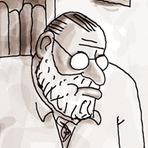Sports
/ArcaMax
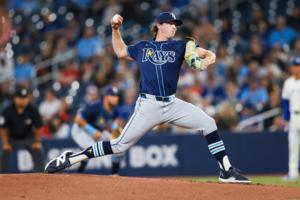
Ryan Pepiot's good outing ends badly as Rays lose to Blue Jays
The first five innings Ryan Pepiot threw Wednesday night in Toronto were certainly good enough to lead the Tampa Bay Rays to a win.
But the couple of mistakes he made in the sixth ended up being the reason they lost, 3-1, to the Toronto Blue Jays.
Pepiot was protecting a one-run lead when he opened the sixth by getting ahead of Vladimir ...Read more

Mets shut out for 2nd time this season in 4-0 loss to Pirates
NEW YORK — After looking unbeatable a month ago, the Mets couldn’t beat the second-worst team in the National League.
To be fair, the series had already been won and the conditions were less than ideal. The Mets battled rain, wind and some questionable umpiring Wednesday night at Citi Field, in a 4-0 loss to the Pittsburgh Pirates, only the...Read more

Pirates earn shutout victory over Mets, avoid sweep
NEW YORK — Mother Nature brought the rain. Matt Gorski brought the thunder.
Gorski hit a two-run homer through a downpour, Jared Triolo added another two-run shot in the fifth, and five Pittsburgh Pirate pitchers combined for a shutout in a 4-0 win Wednesday night at Citi Field. It’s the Pirates’ fourth shutout of the season.
Pittsburgh ...Read more

Tigers sweep Red Sox on Malloy's ninth-inning heroics
DETROIT — You don’t expect Tarik Skubal to give back a three-run lead in the seventh inning of any start, let alone one where he had 11 strikeouts coming into the inning.
But here we are.
The Boston Red Sox KO’d Skubal in the seventh but couldn't quite avoid getting swept out of Comerica Park.
Andy Ibanez, summoned to pinch-hit against ...Read more
Feisty Cardinals thunder back to clobber Phillies, 14-7, in nightcap, split doubleheader
PHILADELPHIA — Of the many and varied and nail-biting ways the Cardinals have found to win during their May surge, they had to show they were capable of a new one late Wednesday.
They had to win an old-fashioned, sometimes sloppy slugfest.
Down by four runs before they got a second crack at Philadelphia starter Aaron Nola, the Cardinals ...Read more
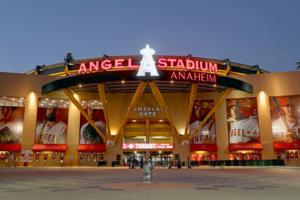
The future of Angel Stadium? Anaheim puts the issue on hold.
LOS ANGELES — The city of Anaheim is likely to wait until after the baseball season to address the future of Angel Stadium.
With the city expecting to complete a long-awaited assessment of the condition of the stadium this summer, deputy city manager Ted White told the City Council on Tuesday that the prudent course of action would be for his...Read more

Aaron Judge home run lifts Yankees to series win over Mariners
SEATTLE — The afternoon started with Julio Rodríguez robbing a home run with a leaping catch at the wall just five pitches into the game.
It ended with Rodríguez and Randy Arozarena standing and watching, and neither really moving as Aaron Judge provided another reminder that ultimately he is inevitable.
Relatively quiet for most of the ...Read more

Giants make some late noise, but are doomed by early pitching struggles against Diamondbacks
SAN FRANCISCO – The San Francisco Giants loaded the bases in the bottom of the ninth inning but could not get the decisive hit in an 8-7 loss to the Arizona Diamondbacks on Wednesday at Oracle Park.
Matt Chapman, Willy Adames and Patrick Bailey all reached base with one out in the ninth against Diamondbacks closer Shelby Miller. LaMonte Wade ...Read more

Twins sweep doubleheader from Orioles, extend winning streak to 10 games
BALTIMORE — After Kody Clemens connected with a first-pitch change-up from Baltimore Orioles reliever Yennier Cano in the eighth inning, he stood in the batter’s box for a few moments as he watched the ball sail beyond the right-field wall.
With the way the Twins have played during their 10-game winning streak, all the bounces that have ...Read more
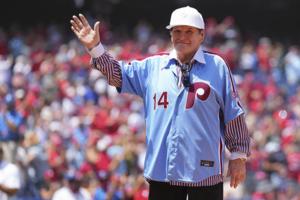
Mike Bianchi: President Trump, not MLB commissioner Rob Manfred, reinstated Pete Rose
ORLANDO, Fla. — Don’t kid yourself, it wasn’t MLB commissioner Rob Manfred who reinstated Pete Rose and "Shoeless" Joe Jackson and made them eligible for the Baseball Hall of Fame earlier this week. It was President Donald Trump.
Does anybody really think it’s just a coincidence that Rose was reinstated just a couple of weeks after ...Read more

Twins beat Orioles, 6-3, in opener of doubleheader, extend winning streak to nine games
BALTIMORE – Christian Vázquez bought the Spartan-style helmet the Twins give their home run hitters for their dugout celebration, which he found browsing Amazon at the start of the season, and Wednesday he was finally allowed to put it on himself.
And he was the one to break it.
After Vázquez homered for the first time this season, a three...Read more
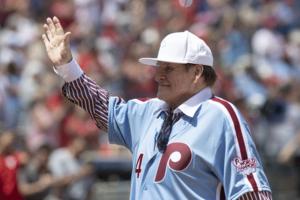
Paul Sullivan: Pete Rose will likely end up in the Hall of Fame now. What about 'Shoeless' Joe Jackson?
CHICAGO — Pete Rose owes his eternal gratitude to President Donald Trump, Commissioner Rob Manfred and the Baseball Hall of Fame for getting him into Cooperstown in 2028, assuming he’s rubber stamped by the 16-member Classic Baseball Era Committee when he’s placed on the ballot in two years.
Since he’s no longer living, we’ll have to ...Read more
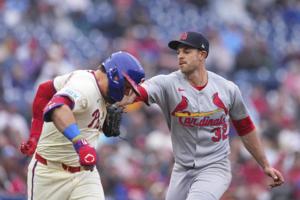
Phillies hold off Cardinals in Game 1 of doubleheader; Kyle Schwarber's on-base streak ends
PHILADELPHIA — The Phillies pulled out a slim 2-1 victory over the St. Louis Cardinals in the opening game of Wednesday’s doubleheader, but for the first time this season, Kyle Schwarber didn’t touch first base.
Schwarber’s on-base streak came to an end at 47 games, after going 0 for 4 on Wednesday. He fell just short of tying Bobby ...Read more
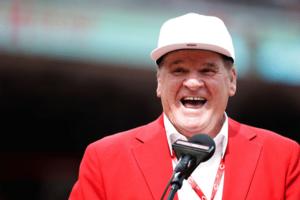
John Clay: Pete Rose may now be a Hall of Famer. Not living to see it is punishment enough.
LEXINGTON, Ky. — Better late than never, you could say.
Tuesday brought unexpected news that MLB commissioner Rob Manfred has removed Pete Rose, “Shoeless” Joe Jackson and other deceased players from the league’s permanently ineligible list. The commissioner ruled that punishment of banned individuals ends upon their deaths.
Around ...Read more
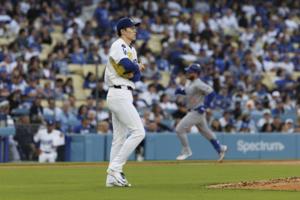
Dylan Hernández: Roki Sasaki's shoulder issue leaves Dodgers in a familiar and problematic position
LOS ANGELES — Like pretty much every other time the Dodgers have found themselves in a self-made mess, the task of downplaying a major problem once again was made the responsibility of manager Dave Roberts.
So, in the aftermath of a deflating 11-1 defeat by the Oakland Athletics on Tuesday night, Roberts trudged into the interview room at ...Read more
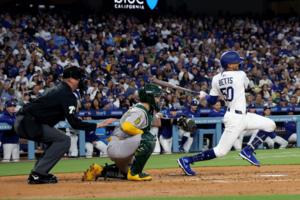
<strong>Dodgers are routed by Athletics, but will get Clayton Kershaw back Saturday</strong>
Manager Dave Roberts continued to give Michael Conforto his chances at the plate.
The former Giant was pegged to do what he’s done his entire career: hit with power. Instead, he’s struck out 41 times and hits a whopping .153, comfortably bottom of the barrel in the Dodgers lineup.
For Chris Taylor, starts are few and far between. The ...Read more
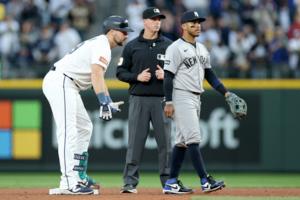
J.P. Crawford hits walkoff single in 11th as Mariners beat Yankees, snap skid
For the better part of six innings on Tuesday night the Mariners offense was atrocious and on the verge of ruining a terrific night of pitching.
It took two pitches to change the entire tenor of the evening and snap the Mariners’ four-game losing streak.
J.P. Crawford delivered the final blow with a single that scored Leody Taveras in the 11...Read more
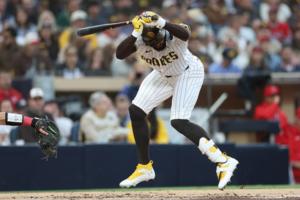
Fernando Tatis Jr.'s walk-off homer saves Padres after another bullpen blow-up
The Padres keep professing faith in their bullpen.
“Why wouldn’t I have the confidence?” manager Mike Shildt said Tuesday afternoon. “I mean, everybody gets a little bit of grace, right? … I mean, track record gives you confidence.”
A few hours later, another Padres reliever continued the bullpen’s ride off the rails.
But the ...Read more

Koss' grand slam leads SF Giants' three-homer day to break cold spell
SAN FRANCISCO — The Giants carried two starkly different trends into Tuesday. They’d never lost a game where Robbie Ray started. They’d also never won a game with their new City Connect jerseys.
Something had to give. By night’s end, their four-game losing streak was a remnant of the past.
Christian Koss hit a grand slam for his first ...Read more
Brett Baty homers, Kodai Senga battles in Mets win over Pirates
NEW YORK — Maybe this isn’t exactly what the New York Mets envisioned when they drafted Brett Baty in the first round of the 2019 draft, and his timeline certainly isn’t what the club envisioned. But Baty has finally blossomed from prospect to big leaguer.
The second baseman/third baseman broke a tie in the bottom of the seventh inning to...Read more
Popular Stories
- <strong>Dodgers are routed by Athletics, but will get Clayton Kershaw back Saturday</strong>
- Mike Bianchi: President Trump, not MLB commissioner Rob Manfred, reinstated Pete Rose
- Bill Shaikin: Anaheim wants an Angel Stadium deal. Angels fans see inspiration in San Diego.
- Paul Zeise: Pete Rose and 'Shoeless' Joe Jackson are reinstated. Now put them both in the Hall of Fame.
- Rockies' offense AWOL again in 4-1 loss to Rangers


